10 Animals That Are Masters Of Camouflage
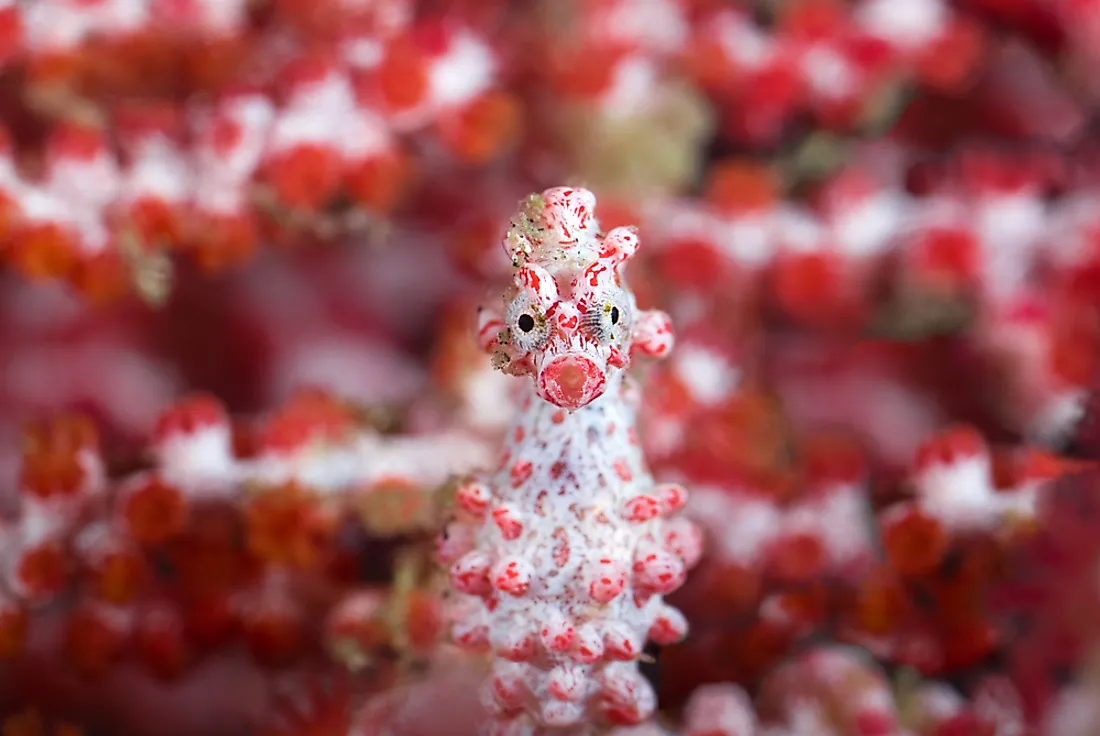
Camouflage is an adaptation that helps many different types of animals survive in the wild. While prey may camouflage to blend in with their surroundings, predators can camouflage to surprise prey. Some animals use their skin, fur, or color to blend with the environment while others mimic shapes, texture, color, and behavior. Here are ten animals who are truly masters of camouflage.
Common Baron Caterpillar
The common baron caterpillar of Southeast Asia, India, and Malaysia is a true master of disguise as it can vanish into the surrounding vegetation in a blink of an eye. The caterpillar developed camouflage as a method of escaping angry birds, lizards, and chameleons. The larva is green with a white band stretching across its entire back to blend with the leaves of the mango tree where it is commonly found.
Dead Leaf Mantis
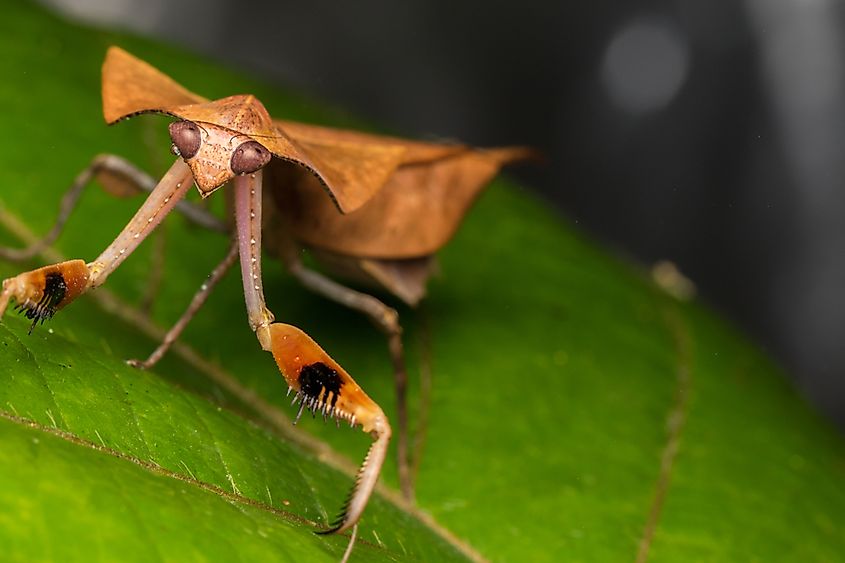
The dead leaf mantis looks precisely as its name suggests. Its entire body is covered by dark and light shades of brown spots to mimic a dead leaf. When the mantis spots a predator, it stands still and blends into the environment. The camouflage has shaped the dead leaf mantis into an efficient predator due to its ability to approach prey without detection.
Stonefish
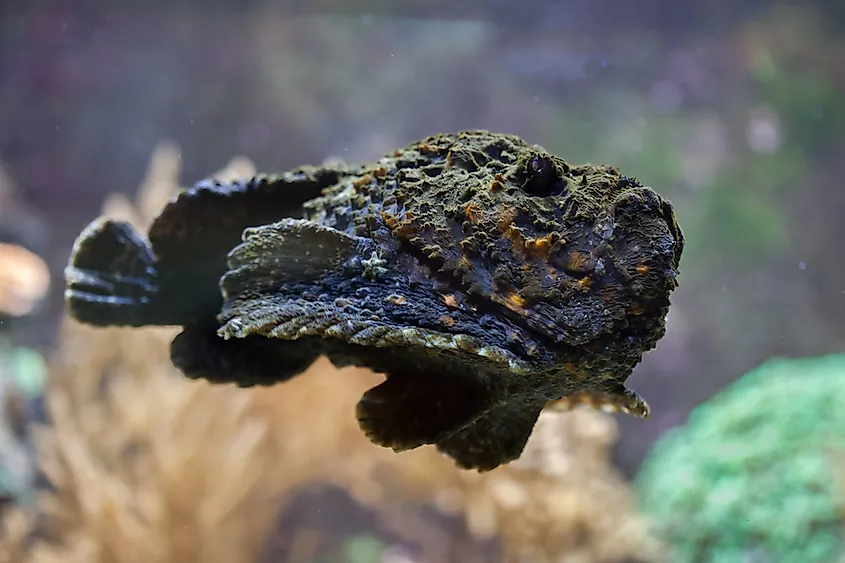
Stonefish are so good at camouflage that prey, predators, and even humans have trouble seeing them. They blend to their environment at the seafloor, especially among the rocky reefs and corals, as their skin color and texture match the substrate. Some stonefish have mastered the art so much that they even grow algae that give them an advantage over predators. They do not pursue prey but instead sit and wait for small fish and invertebrates to come to them. Stonefish are not on the menu of other fish or humans since they are among the most poisonous marine animals.
Great Grey Owl
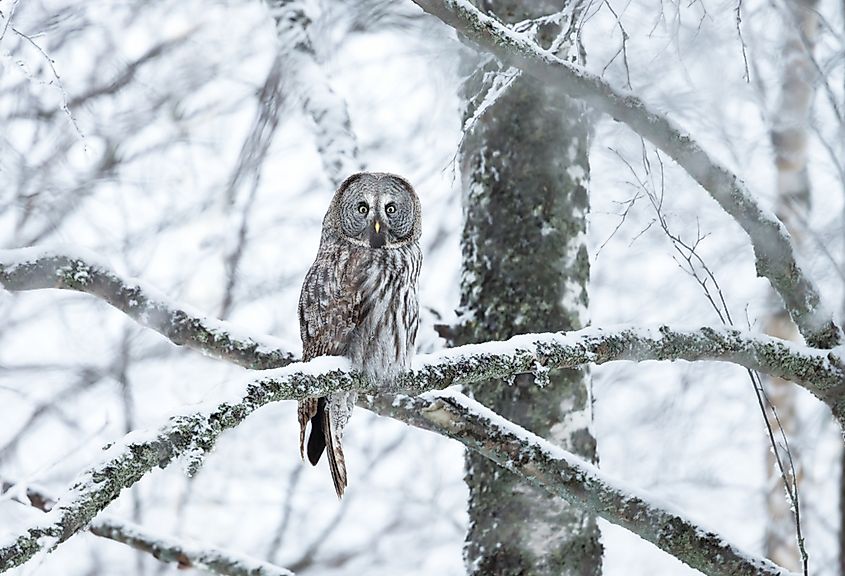
The great grey owl is the largest owl in the world by length. They are found across North America from Quebec in the east to Alaska and the Pacific Coast in the West. They are also found in Finland, Estonia, and northern Asia. The birds have a large round head with yellow eyes. Their underparts are light with long dark streaks while the upperparts are greyish. The great grey owl blends with its environment and uses camouflage to sneak up on prey rather than escape predators.
Right Eyed Flounder
The red-eyed flounder is a flatfish that has adapted to life on the seafloor. The fish huddles up to the seabed and blend in with the pebbles. This adaptation let them ambush small fish, larvae, worms, and shrimps while hiding from predators. The flounder can drift its eye to the other side of the head, allowing it to swim flat with both eyes looking up.
Katydids
Katydids have leaflike bodies that allow them to evade frogs, snakes, birds, and other predators. They are green in color and spend much of the time in green leaves. Katydids are elusive insects and are rarely seen but can be heard rubbing their wings to produce the "katy-did" sound. Their love for green leaves put them at odds with gardeners and farmers.
Tawny Frogmouth
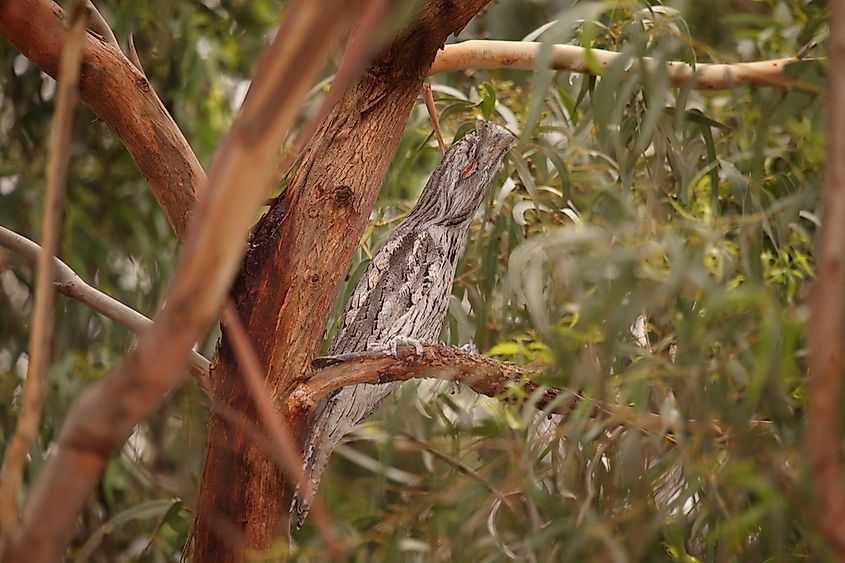
Tawny frogmouths are famous for their big yellow eyes and gaping beaks. The birds imitate the swerving of tree branches, and when they suspect danger, they close their eyes and tilt back their round heads to blend into the bark of the tree. They are far from being masters of flying and, therefore, cannot chase their prey to exhaustion; neither do they use their talons to catch prey. They sit still in branches and wait for prey to come to them.
Mossy Leaf-tailed Gecko
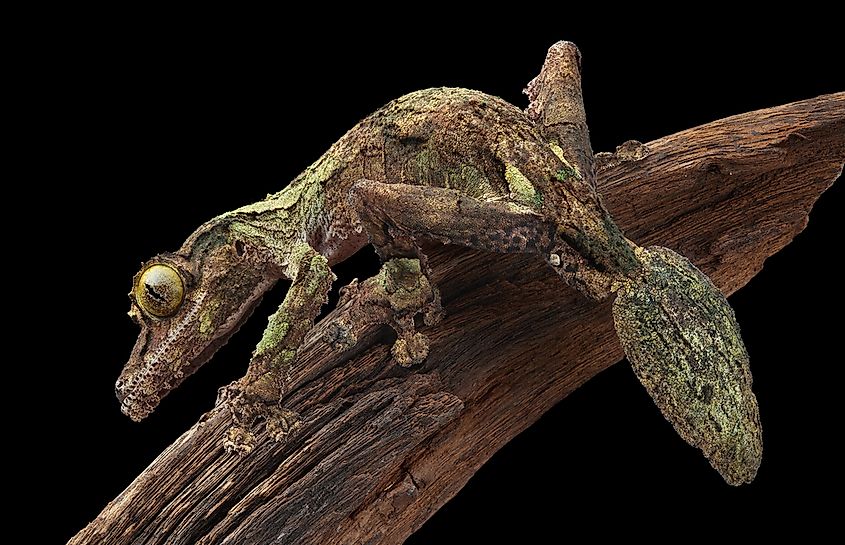
The mossy leaf-tailed gecko has a skin that looks like it has been overrun with moss. The species is only found in the rainforests of Madagascar. Since the geckos live in trees, their skins have evolved to resemble moss and bark. In addition, they can change their skin to match the environment, much like chameleons.
Pygmy Seahorse
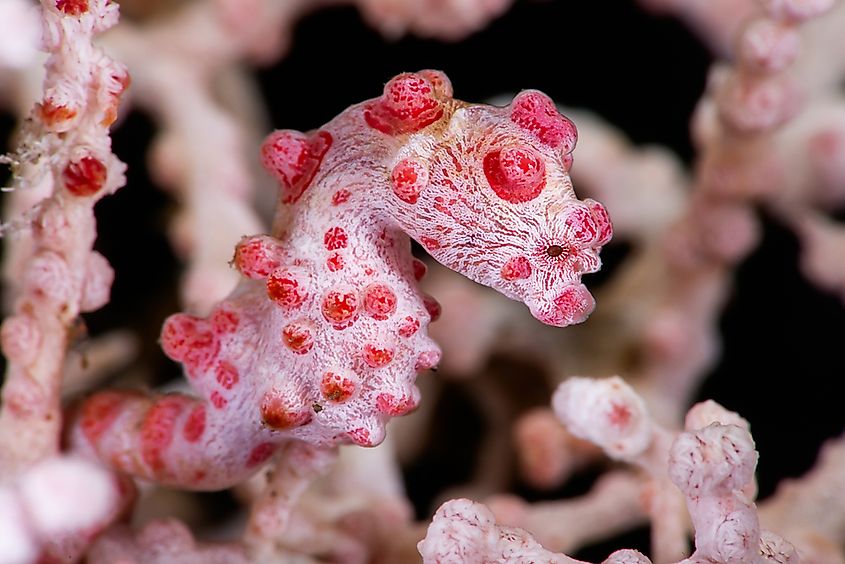
Coral reefs are a difficult place to live because they attract all sorts of predators. Those who live in the reefs depend on survival strategies, and the pygmy seahorse is a master of living incognito. The seahorse is less than an inch long and is studded with tubercles that blend with the reefs. The pygmy seahorse is so good in camouflage such that it was accidentally discovered in an aquarium of wild corals.
Stick Insect
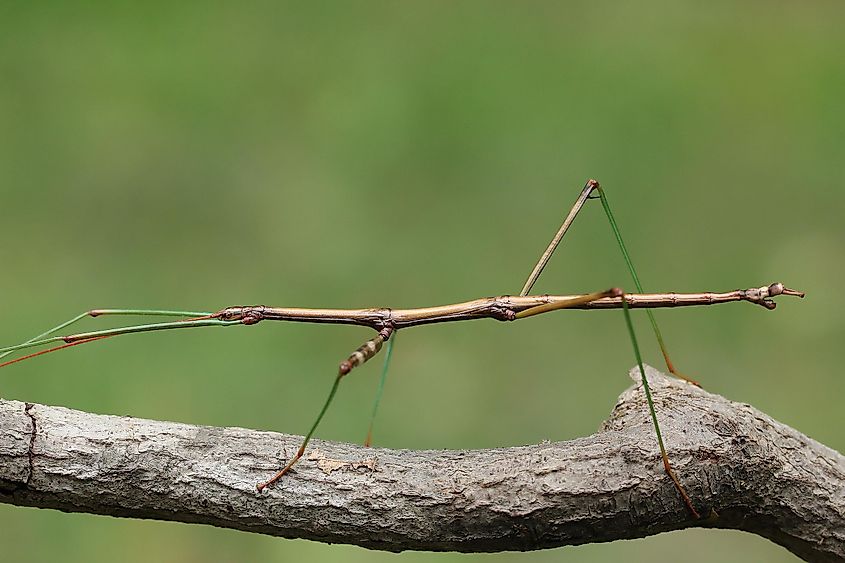
Most animals require a specific backdrop for camouflage to work, but the stick insect can go incognito in every environment. Their twig-like bodies make them virtually invisible in vegetation. Stick insects range in size from half an inch to about 2 feet long. They are green or brown in color and tend to freeze when threatened.











